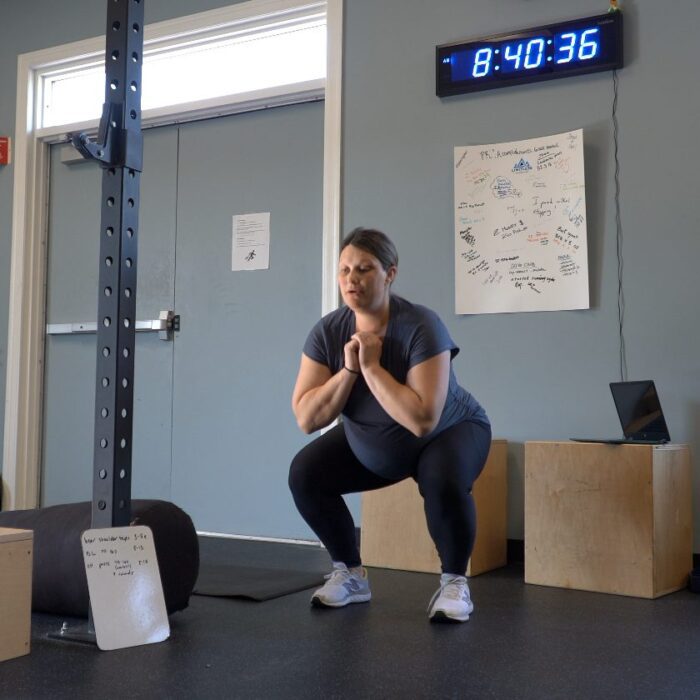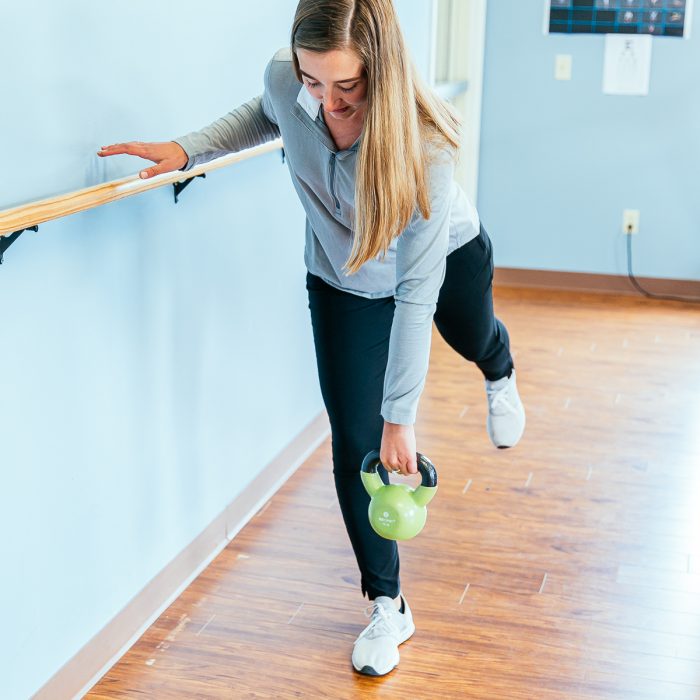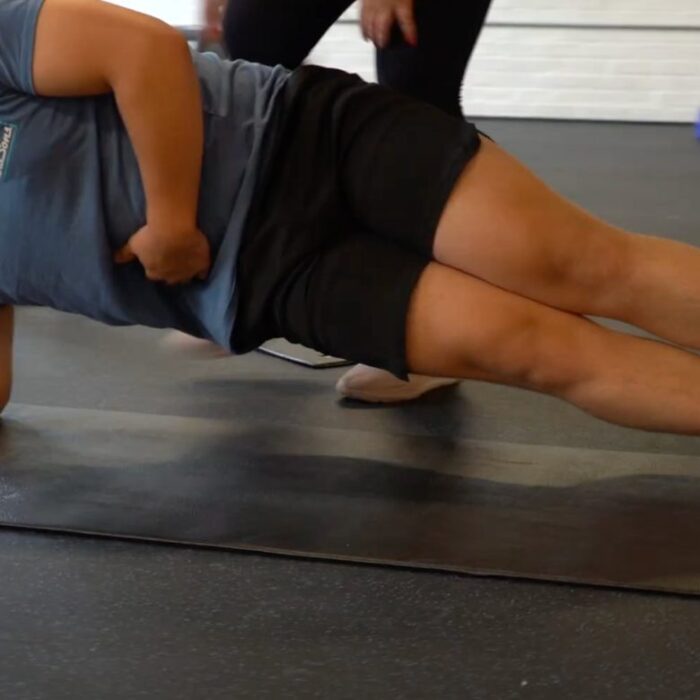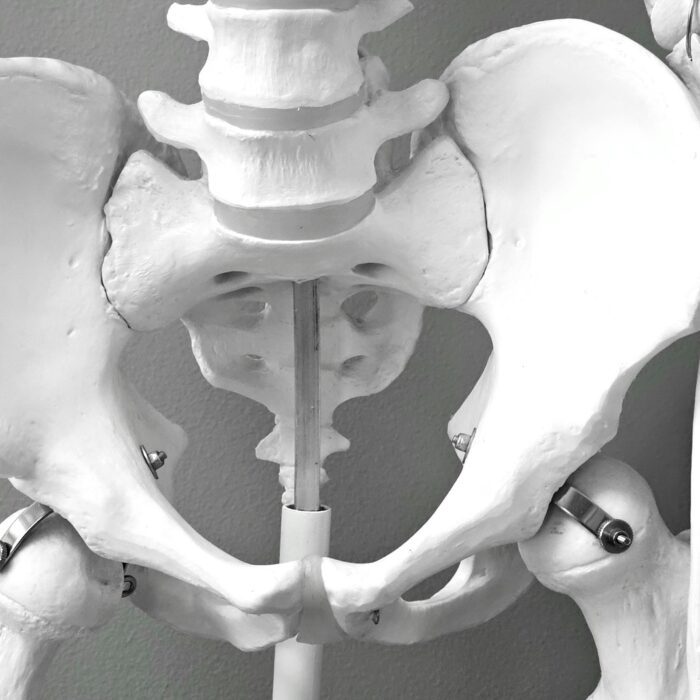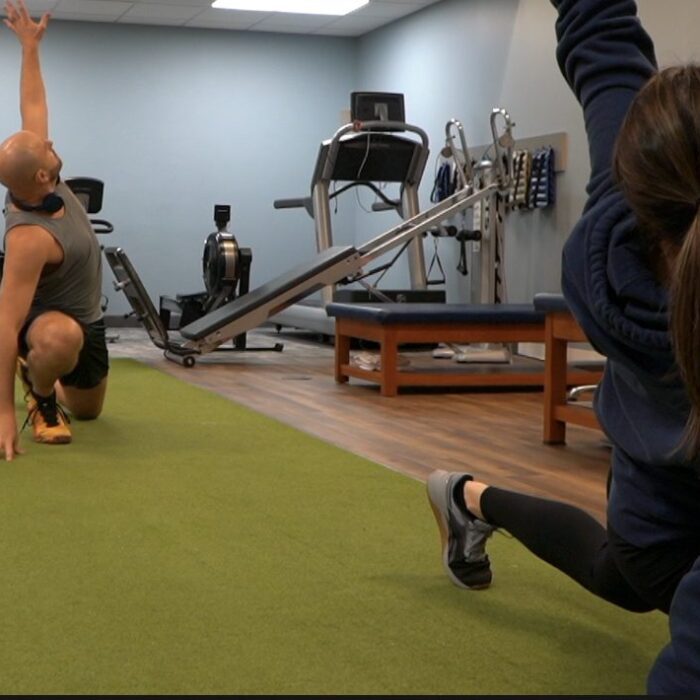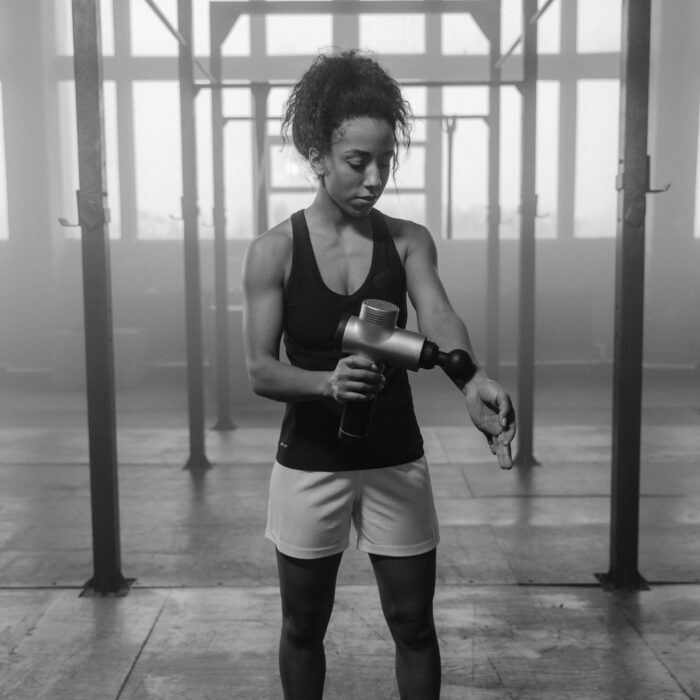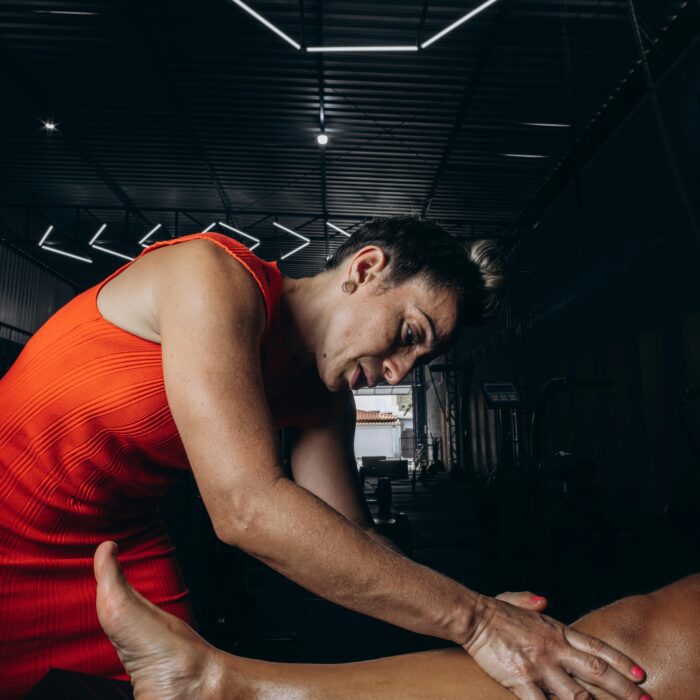Sports injury rehabilitation is more than recovery — it’s the process of rebuilding strength, confidence, and performance so you can return to what you love with less risk of re-injury. At Limitless Physical Therapy, we help athletes and active individuals across the Rochester area restore movement, rebuild capacity, and return to competition safely and effectively.
What Is Sports Injury Rehabilitation?
Sports injury rehabilitation is a structured, evidence-based process that helps athletes move from injury to full return. It focuses on restoring strength, mobility, coordination, and confidence through progressive, phase-based treatment.
Effective rehabilitation involves five key elements. Tissue healing support ensures ligaments, tendons, muscles, and bones recover properly through controlled loading and manual therapy. Movement pattern correction addresses the dysfunctions — like hip weakness or poor ankle mobility — that often contribute to injury. Progressive strengthening rebuilds muscle endurance and power specific to your sport, while neuromuscular re-education restores communication between your brain and muscles to improve balance and control. Finally, psychological preparation helps you overcome fear of re-injury and return with full confidence.
At Limitless PT, we’ve guided more than 5,000 athletes through this process, helping them come back stronger than before.
How Sports Injury Rehab Differs from General Physical Therapy
General physical therapy focuses on restoring comfort in daily activities — walking, climbing stairs, or lifting objects without pain. Sports injury rehabilitation goes further. It prepares the body for the advanced physical demands of competition: sprinting, jumping, throwing, and performing at peak intensity for extended periods.
Unlike general PT, sports rehab involves sport-specific movement analysis, progressive loading that replicates game conditions, and return-to-play testing with objective performance criteria. The goal isn’t just to eliminate pain — it’s to restore total readiness, confidence, and resilience so athletes can perform safely and sustainably.
Goals Beyond Pain Relief
Pain relief is only the first milestone in rehabilitation. True recovery means ensuring tissue is fully healed and strong enough to handle sport demands. Restoring full range of motion allows efficient movement without compensation, while building symmetrical strength reduces the risk of imbalance and re-injury. Rehabilitation also focuses on improving movement quality — correcting faulty patterns that often cause injuries in the first place.
Equally important is psychological readiness. Studies show that confidence in your body’s ability to perform is one of the strongest predictors of successful return to sport. Comprehensive rehabilitation builds both the physical and mental resilience needed to compete without hesitation.
Common Sports Injuries Requiring Rehabilitation
Acute Injuries
Sudden injuries like ligament tears, muscle strains, and fractures require structured rehabilitation to restore stability and function. Common examples include ankle and knee sprains (ACL, MCL, PCL), hamstring or calf strains, and joint dislocations. These injuries benefit from gradual strengthening and neuromuscular training to rebuild control and prevent recurrence.
Overuse and Chronic Conditions
Not all injuries occur in a single moment. Overuse injuries — such as tendinopathies, impingement syndromes, stress reactions, and IT band syndrome — develop over time from repetitive motion and poor mechanics. Successful rehabilitation corrects underlying causes like muscle imbalance, improper loading, or limited mobility, rather than simply resting the affected area.
Post-Surgical Rehabilitation
After surgical repairs like ACL reconstruction, rotator cuff repair, or meniscus and labral surgery, rehabilitation is essential for restoring full function. These programs follow structured phases to protect healing tissues, progressively rebuild strength, and ensure the repaired structures can handle athletic forces. At Limitless PT, our team helps athletes navigate these protocols safely and efficiently.
Phases of Sports Injury Rehabilitation
While every injury is unique, most follow a predictable progression through five overlapping stages. Understanding this process helps set expectations and supports long-term success.
Phase 1: Protection and Pain Control (Weeks 1–2)
The initial phase focuses on reducing pain, controlling inflammation, and protecting the injured area. Gentle mobility and activity modification prevent further damage. Early restraint — not overexertion — is critical to long-term healing.
Phase 2: Restore Mobility and Begin Strengthening (Weeks 2–4)
As inflammation subsides, the emphasis shifts toward regaining range of motion and initiating light, controlled strengthening. Manual therapy, stretching, and low-load exercises help restore joint movement and muscle activation. Consistent, gentle effort is more effective than pushing through pain.
Phase 3: Progressive Strength and Conditioning (Weeks 4–8)
Once mobility improves, structured strengthening begins. Athletes rebuild power, endurance, and balance using progressive resistance and sport-specific movements. This phase also targets neuromuscular re-education — retraining reflexes, coordination, and proper joint alignment under stress.
Phase 4: Sport-Specific Training (Weeks 8–12)
Rehabilitation becomes more dynamic, mirroring real-game situations. Plyometric drills, agility work, and explosive training prepare the body for competition demands. Mental preparation and confidence building become equally important as athletes relearn to trust their bodies.
Phase 5: Return to Competition (Week 12+)
The final stage involves objective testing to confirm readiness. Therapists assess strength symmetry, endurance, balance, and sport-specific performance before clearing return to play. Gradual re-entry — limited practice, then full practice, then competition — ensures a safe and lasting recovery.
What to Expect During Rehabilitation
Initial Assessment
Your first appointment involves a comprehensive evaluation to identify the injury’s cause and impact. This includes reviewing medical history, analyzing movement patterns, testing range of motion and strength, and discussing your goals and timeline. You’ll leave with a clear understanding of the injury, a treatment roadmap, and what milestones to expect along the way.
Personalized Treatment Plan
Every athlete’s recovery is different. Your therapist designs a plan tailored to your body, sport, and objectives. This includes phase-appropriate treatment, corrective strategies for weaknesses or movement faults, and clear milestones to track progress. You’ll also receive a customized home exercise program to accelerate recovery between sessions.
Hands-On Treatment
Manual therapy plays a vital role in improving mobility and reducing pain. Techniques such as joint mobilization, soft-tissue release, and instrument-assisted therapy help restore normal motion and enhance blood flow to healing tissues. Research shows that combining manual therapy with exercise produces better outcomes than either approach alone.
Exercise and Training Progression
Rehabilitation follows a proven progression model: building control first, then strength, and finally power. Early exercises often involve isometric holds and controlled movements. As strength improves, concentric and eccentric exercises add resistance and movement. Later phases focus on functional, explosive drills that replicate sport-specific tasks.
The progression also transitions from isolated muscle work to integrated, full-body movements — ensuring the athlete can handle real-world demands. Proper sequencing prevents overloading weak tissues and ensures that strength gains translate directly to performance.
Neuromuscular Re-Education
Injury disrupts how the nervous system communicates with muscles, affecting balance, coordination, and timing. Rehabilitation retrains these systems through targeted drills. Balance and proprioception exercises improve joint awareness, reducing ankle sprain recurrence by as much as 50%. Reactive training enhances reflexes and quick decision-making, while fatigue-based drills ensure form and stability under pressure.
At our Greece location, we specialize in vestibular and balance rehabilitation — helping athletes regain full confidence in movement after injury.
The Psychology of Recovery
Physical healing is only part of the process. The emotional and psychological aspects of injury can be just as significant. Many athletes experience fear, frustration, or loss of identity when sidelined. Addressing these challenges is crucial to a complete recovery.
Education about the healing process helps reduce anxiety, while objective performance testing proves your body is ready. Gradual exposure to progressively harder movements builds trust in your physical capabilities. At Limitless PT, therapists integrate these strategies into each program, ensuring athletes feel mentally as well as physically ready to return to competition.
Maintaining mental health during recovery is equally important. Staying connected with teammates, setting small, meaningful goals, and communicating openly about frustrations can prevent burnout. We encourage athletes to celebrate progress, not just the end goal, to keep motivation high throughout the journey.
Preventing Re-Injury
Re-injury is one of the biggest concerns for athletes — and one of the key reasons structured rehabilitation matters. Studies show that returning to sport too early can increase re-injury risk by more than 70%. Proper rehabilitation dramatically lowers that risk through balanced strength training, movement correction, and psychological readiness.
Our approach at Limitless PT focuses on long-term resilience. We identify and correct underlying causes — from poor biomechanics to inadequate conditioning — and build total body strength symmetry before clearance. Athletes who meet objective return-to-sport criteria and maintain regular check-ins after recovery experience far lower recurrence rates and improved performance.
Rehabilitation Outcomes
Research and our own clinical data show that the majority of athletes experience significant improvement with structured rehabilitation. Around 79% of patients report substantial pain reduction, and 90% report improved overall quality of life. For sports-specific injuries, 85–90% of athletes successfully return to play when following phase-based rehabilitation.
At Limitless Physical Therapy, our success rates align closely with — and often exceed — these national benchmarks. Over 15 years, we’ve helped thousands of Rochester-area athletes return to competition stronger, more confident, and less prone to injury than before.
Choosing the Right Sports Injury Specialist
Not every therapist specializes in athletic recovery. Look for providers with extensive experience in sports injury rehabilitation, a track record of evidence-based care, and a focus on individualized treatment. Quality rehabilitation includes comprehensive evaluation, clear communication, measurable goals, and tailored progressions specific to your sport.
Limitless PT’s Approach
At Limitless Physical Therapy, we combine clinical expertise with personalized attention. Our philosophy is simple: empower athletes to overcome limitations and return even stronger. We conduct detailed movement evaluations, follow research-backed protocols, and collaborate with coaches and trainers to ensure continuity between therapy and performance.
Our four Rochester-area clinics provide convenient access to specialized care:
Victor: 6534 Anthony Dr, Suite C — (585) 869-5140
Brighton: 2561 Lac DeVille Blvd, Suite 100 — (585) 473-1290
Greece: 91 Erie Canal Dr, Suite E — (585) 910-2242
Cortland: 165 Main St, Suite 5A — (607) 408-5200
We accept most insurance plans, and New York State allows direct access to physical therapy — meaning you can start treatment without a physician referral.
Starting Your Recovery
You should consider professional sports rehabilitation if pain lasts longer than a week, if you feel instability or weakness, or if an old injury keeps returning. Early intervention not only speeds recovery but prevents small issues from becoming chronic.
Your first visit at Limitless PT includes a 45–60-minute evaluation, where we assess your movement, explain the diagnosis, and outline your recovery timeline. From there, most patients attend one to two sessions per week, supported by a customized home exercise plan. Our team will also review insurance coverage and costs upfront, so there are no surprises along the way.
Come Back Stronger
A sports injury can feel like a major setback — but with the right rehabilitation, it becomes an opportunity for growth. Proper recovery doesn’t just heal what’s injured; it builds strength, control, and confidence that surpass your pre-injury performance.
At Limitless Physical Therapy, we’ve spent over 15 years helping Rochester-area athletes recover from sports injuries and return to the activities they love. Our mission is to help you move freely, perform better, and live without limits.
Ready to begin your recovery?
Contact Limitless Physical Therapy today or visit limitlesspts.com to schedule your evaluation and start your journey back to peak performance.

